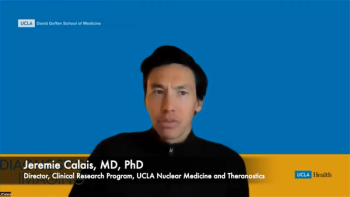
Eye Exam Plus AI Could Replace Advanced Imaging in Parkinson’s Detection
Basic photographs paired with AI technique can pick up on retinal changes that are early signs of the progressive central nervous system disorder.
Detecting Parkinson’s disease earlier could be as simple as applying an artificial intelligence algorithm to a regular photograph, potentially replacing the use of CT or MRI brain images.
In research that will be presented during the Radiological Society of North America (RSNA) annual meeting next week, investigators from the University of Florida in Gainesville have deployed a type of artificial intelligence (AI) called support vector machine (SVM) learning to pick up on early signs of Parkinson’s disease that can be captured in normal pictures of the back of the eye.
This tactic can be used to replace the traditional method of diagnosing Parkinson’s disease – simply waiting until the patient begins to exhibit the characteristic tremors, muscle stiffness, and impaired balance that accompany this progressive central nervous system disorder.
For more coverage based on industry expert insights and research, subscribe to the Diagnostic Imaging e-Newsletter
“The issue with that method is that patients usually develop symptoms only after prolonged progression with significant injury to dopamine brain neurons,” said lead study author Maximillian Diaz, a biomedical engineering doctoral student at the University of Florida. “This means that we are diagnosing patients late in the disease process.”
Instead, he said, an eye exam can provide clues that can lead to early diagnosis and therapy. As Parkinson’s progresses, nerve cell decay wears away the retinal walls, and it also impacts the retina’s microvasculature. With SVM, providers can pick up on these changes, supporting the theory that evidence of brain physiology alterations can be found in the eye.
Currently, to find problems in the brain, providers must use costly MRI, CT, and nuclear medicine techniques to capture brain images. Instead, SVM can be used with the basic photography equipment that most eye clinics have available in-office. In fact, Diaz said, this new technique also works with a smartphone that is equipped with a special lens.
“It’s just a simple picture of the eye, you can have it done in less than a minute, and the cost of the equipment is much less than a CT or MRI machine,” Diaz said. “If we can make this a yearly screening, then the hope is that we can catch more cases sooner, which can help us better understand the disease and find a cure or a way to slow the progression.”
In addition to detecting Parkinson’s, he said, it is possible this approach could also be used with the identification of Alzheimer’s and multiple sclerosis.
For this study, Diaz worked with graduate student Jianqiao Tian and University of Florida neurologist Adolfo Ramirez-Zamora, M.D. The team was led by Ruogu Fang, Ph.D., director of the J. Crayton Pruitt Department of Biomedical Engineering's Smart Medical Informatics Learning and Evaluation Lab (SMILE).
For more RSNA coverage, click
Newsletter
Stay at the forefront of radiology with the Diagnostic Imaging newsletter, delivering the latest news, clinical insights, and imaging advancements for today’s radiologists.




























